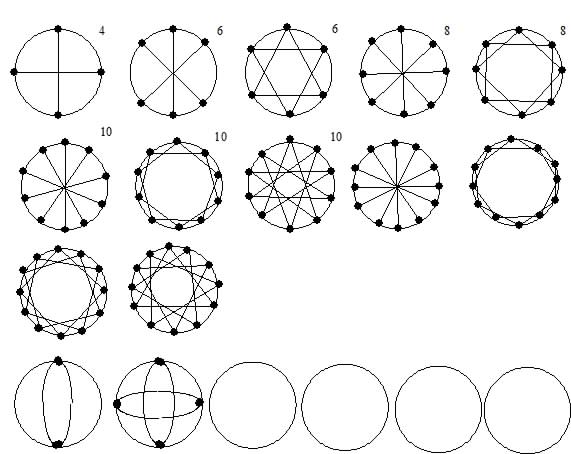Polygrams
A polygram is like a polygon but the sides are allowed to cross. A polygram of n-sides or vertices is called an n-gram and for particular values of n we can give them individual names as for polygons. However there is no such thing as a 'trigram', since three successive line segments cannot cross anywhere; the first case is a tetragram, followed by pentagram, hexagram, heptagram, octagram, and so on.
A regular polygram has all sides and angles equal. A tetragram cannot be regular, it can however be quasiregular, that is have the same vertices as a regular polygon; the first case of a regular polygram is the pentagram; there are also two quasiregular pentagrams. From six points we can derive eleven quasiregular hexagrams; none regular, one is asymmetric. The suffixes in the dagram indicate the numbers of different orientations in which each polygram can be seen if the points are fixed in place (thus 1 indicates regular). [The problem of enumerating the 6-point regular and quasiregular polygons and polygrams appears as problem 51 in K. Fujimura, The Tokyo Puzzles, where it is attributed to S. Kobayashi (c.1976).]

The condition for a regular polygram with n vertices to exist is that there be a number m > 1 and < n/2 such that m and n have no common factor other than 1; the polygram is then formed by connecting each vertex to the mth vertex round the circle successively. The number of points of intersection within and on the circle is m.n, since they form m circles of n. There are two regular polygrams of 7 vertices (m = 2, 3); one of 8 vertices (m = 3); two of 9 vertices (m = 2, 4); one of 10 vertices (m = 3); four of 11 vertices (m = 2, 3, 4, 5); one of 12 vertices (m = 5).
